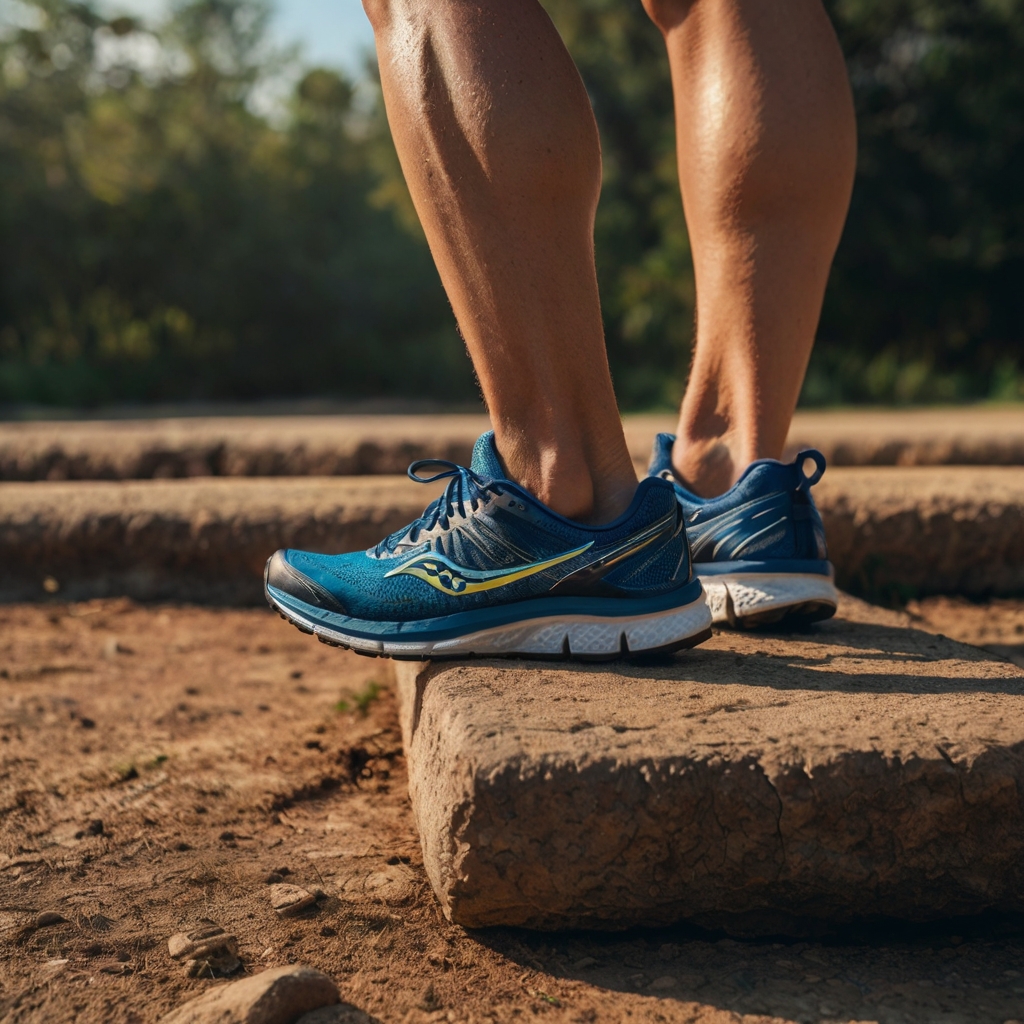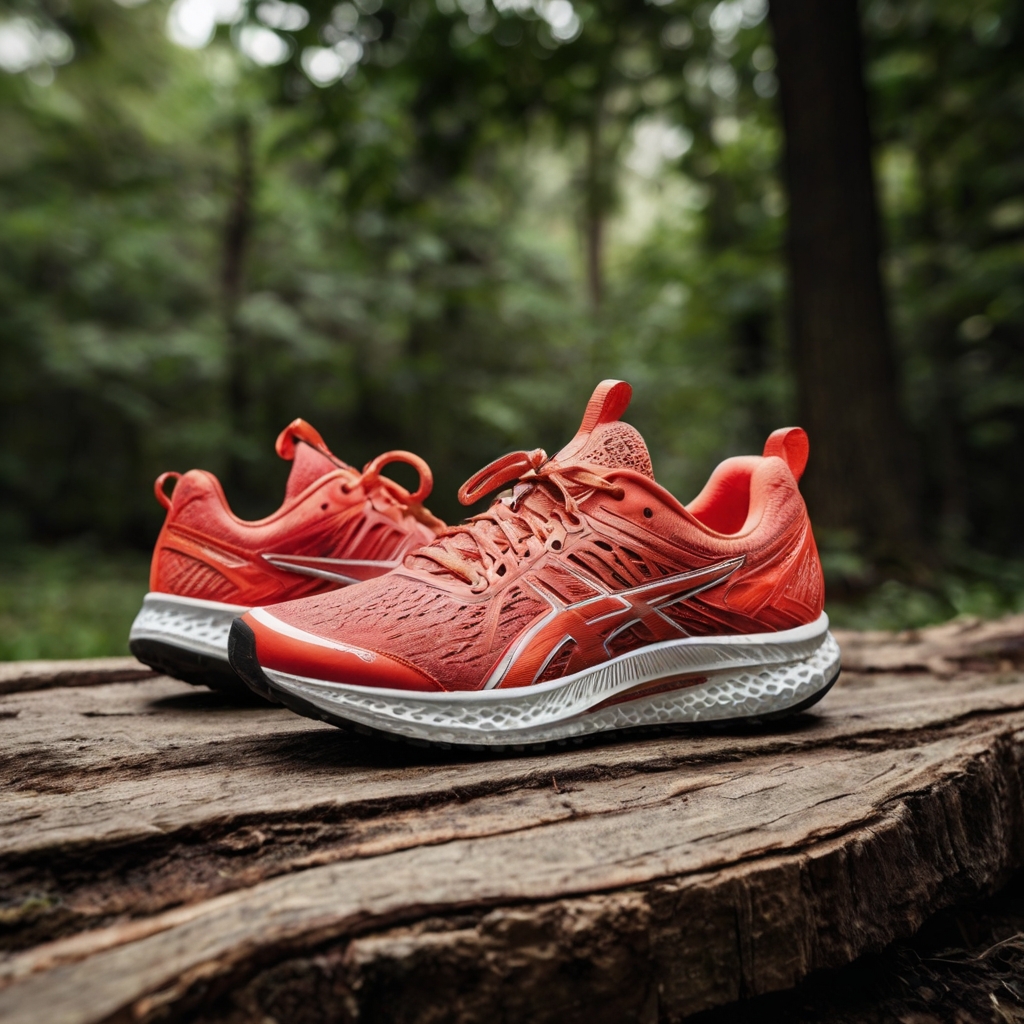Running shoes designed for overpronation can transform the running experience for about 70% of runners who deal with this foot motion pattern. A normal pronation should take up just 15% or less of your step. People who overpronate need specialized support because their feet roll inward too much.
Stability running shoes tackle this problem with special features. They use dual-density midsoles and medial posts that give support exactly where runners need it. The perfect supportive running shoe needs to do more than just offer stability. It must balance firm support with the right amount of cushioning. The Asics Gel-Kayano 31 comes with an impressive 40mm stack height, and the Hoka Arahi 7 stands out at just 9.4 oz. This piece looks at podiatrist-approved options that work for every runner. Trail enthusiasts and marathon trainers will find expert picks that keep them running comfortably through the typical 300-500 mile lifespan of quality stability shoes.

Table of Contents
- 1 10 Best Running Shoes for Overpronation
- 2 How to Choose the Right Overpronation Shoe
- 3 How We Selected These Shoes
- 4 Key Features to Look For in Stability Running Shoes
- 5 Expert Tips for Runners with Overpronation
- 6 Summing it all up
- 7 Here are some FAQs about the best running shoes for overpronation:
- 7.1 What shoes should you wear if you overpronate?
- 7.2 Do overpronators really need stability shoes?
- 7.3 Are Hoka or Asics better for overpronation?
- 7.4 Can you be a runner with overpronation?
- 7.5 Can overpronation be corrected?
- 7.6 Is HOKA Bondi good for overpronation?
- 7.7 What running shoes are best for overpronation?
- 7.8 Why is overpronation bad?
10 Best Running Shoes for Overpronation
A good understanding of support features that help with overpronation will help you find the right stability shoes. Here are some podiatrist-recommended options that give runners the balance and comfort they need.
1. Best Overall: Asics Gel-Kayano 31
Asics Gel-Kayano 31 sets the standard for stability running shoes. The 4D Guidance System adapts stability based on your needs. You’ll find a cushioned landing zone thanks to its 40mm heel stack height. The rearfoot PureGEL technology is 65% softer compared to earlier versions. Its engineered mesh upper breathes well and supports your feet – perfect for runners who need reliable pronation control.
Key Features:
- Stack height: 40mm heel/30mm forefoot with 10mm drop
- FF BLAST PLUS ECO midsole for responsive cushioning
- REARFOOT PureGEL for shock absorption
- Weight: 266g (women’s UK 6)
2. Best for Women: Brooks Adrenaline GTS 23
Brooks Adrenaline GTS 23 brings together support and softness for a stable, comfortable run. GuideRails technology takes a smart approach by controlling excessive movement instead of forcing gait correction. DNA LOFT v2 cushioning makes this the lightest Adrenaline in 20 years. Runners with plantar fasciitis will appreciate the 12mm drop that takes pressure off the plantar fascia.
Key Features:
- 12mm heel-to-toe offset (24mm heel to 12mm forefoot)
- GuideRails support technology
- Weight: 10.1 oz (286g) for men’s version
- Available in multiple widths for custom fit
How to Choose the Right Overpronation Shoe
The right footwear choice for overpronation depends on shoes that give you proper support. Research shows 70% of runners overpronate. The right shoe choice plays a vital role in preventing injuries and keeping you comfortable.
Understand your pronation type
Pronation shows how your foot rolls inward when it hits the ground. Normal pronation means your foot rolls inward about 15%. Your foot rolls too far inward with overpronation, which makes your arch collapse. Here’s how you can find out your pronation type:
- Professional gait analysis: Head to a specialty running store or podiatrist who can analyze your running on a treadmill
- Wear pattern examination: Look at your current shoes—people who overpronate wear down the inside edge of the heel and the ball of the foot near the big toe
- Shoe tilt test: Put your worn shoes on a flat surface—they point to overpronation if they lean inward from behind
Check for medial support features
Good stability shoes for overpronation come with several key features:
- Medial posts or dual-density midsoles: These firmer foam sections on the inner shoe limit excessive rolling
- Guide rails: Modern support rails run along the outer heel and arch
- EVA stability plates: These give you flexibility while keeping support
- Internal sole geometry: The midsole structures help guide your foot
Think about your running style and terrain
Your running environment changes what you need in a shoe. Trail runners who overpronate need special features like Brooks’ “Trail Adapt” system that keeps them stable on rough ground. Road runners should focus on correction features like arch support and medial posting.
Your running distance matters too. Long-distance runners might like shoes with extra cushioning like the Saucony Hurricane 24. Runners who focus on speed work might prefer lighter options like the Brooks Hyperion GTS 2.
Look for wide base and heel counter
The shoe’s structure gives you key stability features:
The base width matters—stability shoes have wider platforms that feel more solid when you land. This wider foundation reduces wobbling and supports your feet better.
The heel counter stiffness counts too—overpronators need a firm, padded heel counter. Stability shoes score 4-5 on heel stiffness tests in lab conditions. These counters keep your heel from moving too much and help you stay stable.
Try before you buy or get fitted
The best advice? Never buy stability shoes without trying them on first. Here’s what experts say you should do:
- Visit specialty running stores to get fitted properly
- Take your running socks and orthotics with you
- Walk or jog in the shoes before buying
- Make sure you have a thumb’s width between your longest toe and the front
- Check that your heel doesn’t slip and your arch feels supported
Your running style changes over time, so get your gait checked once a year. This helps you stay on top of your running needs.

How We Selected These Shoes
Our detailed testing process for overpronation running shoes combines scientific lab testing with ground performance assessment. This approach will give a clear picture of what runners need in their stability footwear.
Lab testing and wear testing
Our technicians cut each stability running shoe in half to analyze internal structures. They use specialized equipment to measure midsole firmness with durometers that show precise cushioning levels. Stability shoes often show readings of 23.0 HA for balanced support. Calipers help determine stack heights with precision and document measurements like the 36.0/27.7 mm profiles that influence stability.
The lab work doesn’t tell the whole story. Our testers put in 30-50 miles in each pair on roads, tracks, trails, and treadmills. More than 400 runners in multiple cities test these shoes. This gives us feedback about how overpronation shoes work in ground conditions.
Expert reviews and podiatrist input
Podiatrists are vital to our selection process. Dr. Grace Torres-Hodges assesses fit and stability features, while Dr. Loretta Logan explains how to curb overpronation. Their medical knowledge works alongside feedback from certified running coaches, former collegiate athletes, and biomechanics experts who test each shoe’s performance characteristics.
User feedback and durability scores
Dremel tools help us test outsole resistance. These tests give us numerical scores where higher ratings (4-5 on a 5-point scale) show better longevity. We also analyze customer feedback from product reviews, social media, and direct conversations.
Performance across different use cases
Each stability shoe must perform well in multiple scenarios. We test them during easy recovery jogs, tempo workouts, and long-distance efforts. The shoes need to maintain stable support in different weather conditions and temperatures. Let’s take a closer look at how medial support systems like guide rails and posts work during different gait phases and running speeds.
Key Features to Look For in Stability Running Shoes
Technical components of stability running shoes help consumers make smart choices. Looking for the best running shoes for overpronation requires understanding these structural elements that support your unique gait pattern.
Medial post or guide rails
Traditional stability shoes come with medial posts – dense foam or plastic segments under the arch that stop excessive inward rolling. Modern designs use guide rail systems that work like “training wheels” for your feet. Brooks uses GuideRails technology with two firm foam pieces along the medial and lateral sides. These pieces center your foot as you move. Hoka’s J-Frame wraps around the heel and extends along the inside to create a personalized support system.
Dual-density midsoles
Dual-density midsoles blend two cushioning layers – a firm layer for stability and a soft layer for comfort. This design moves weight through your foot’s ball instead of its inside edge. Different brands have their own approach. Saucony mixes PWRRUN PB foam with firmer PWRRUN foam to balance support. New Balance combines soft Fresh Foam X cushioning with an EVA stability plate.
Heel counter stiffness
The heel counter substantially affects stability through its semi-rigid, U-shaped design around the heel. Professional tests rate heel stiffness from 1-5, and stability shoes usually score 4-5. This feature secures your rearfoot and prevents unwanted movement during strides. Stiffer heel counters with proper padding create ideal conditions for overpronators by reducing excessive heel motion.
Torsional rigidity
Torsional rigidity shows how well a shoe resists twisting forces. Labs test this by twisting the shoe and rating stiffness from 1-5, with 5 being stiffest. Higher rigidity helps overpronators keep foot motion centered. Shoes with carbon plates or rods score higher on torsional tests and give more structured support throughout your gait cycle.
Wide platform for support
A wide base gives you a planted feel when landing and reduces wobbling that challenges overpronators. Most stability shoes have broader platforms, particularly in the midfoot area. This design – sometimes improved by sole flare beyond the upper – creates a solid foundation. Your foot can push against this foundation without collapsing inward.
Expert Tips for Runners with Overpronation
Managing overpronation takes more than buying the right footwear. A proactive approach combined with proper shoe selection creates a detailed plan to maintain foot health long-term.
When to see a podiatrist
Your feet, ankles, or legs might need professional attention if pain persists after rest. A podiatrist can determine how severe your overpronation is by dissecting your feet’s structure, analyzing your gait with specialized devices like GO4D, and checking your shoes for uneven wear patterns—usually on the inner side of the heel and forefoot. Sudden development of flat feet in adults could point to why issues like tendon injuries or arthritis happen. Research shows that 20-30% of people have flat feet because their arches never formed during growth.
How to strengthen your feet and hips
Strong intrinsic foot muscles, calves, hips, and core can help arrange your body better and reduce overpronation. These simple exercises work well:
- Picking up marbles with your toes
- Towel curls—moving a towel towards you with your toes
- Daily calf stretching (not just a quick stretch against a wall, but a longer 30-minute stretch)
Strong glutes help control pronation since these muscles stabilize your hip joint and rotate the femur outward. This matters because you can’t pronate your foot without your knee rotating inward.
Using orthotics with stability shoes
Over-the-counter inserts are enough for mild overpronation, while severe cases need custom orthotics. Yes, it is best to let a professional guide your orthotic selection. Pair your orthotics with neutral shoes instead of stability shoes to avoid overcorrection. This works because inserts designed to work with your feet in specific ways don’t perform their best when placed on platforms that also try to control foot movement.
Alternating between neutral and stability shoes
Research hasn’t decided if stability shoes offer medical benefits, but switching between neutral and stability shoes has practical advantages. This rotation helps strengthen your foot muscles naturally while giving support when needed. Start by using neutral shoes for shorter distances while keeping stability shoes for longer runs as your feet adapt. This approach builds foot strength and might reduce your need for maximum support over time.
Summing it all up
Quality footwear designed for overpronation is both a health decision and a smart money choice. Just like varying your investment portfolio, runners need to pick stability shoes that match their body’s movement patterns.
The stability running shoes market keeps growing as new state-of-the-art solutions tackle overpronation issues. Companies spend big on research to create support systems like medial posts, guide rails, and dual-density midsoles. These features fix excessive inward foot rolling while keeping shoes comfortable.
Premium overpronation shoes cost between $130-180, but they’re worth every penny when it comes to preventing injuries. Medical bills for common overpronation problems like plantar fasciitis or shin splints can run up to $500. This makes buying the right shoes a smart financial move.
New buyers of supportive running shoes should know that stability features are different across brands. Brooks uses GuideRails technology to line up your knees. Asics builds structured cushioning systems to position your feet. Hoka’s J-Frame technology offers lightweight guidance.
The best running shoes for overpronation ended up being ones that balance correction with comfort. They shouldn’t overcorrect your natural stride or give too little support. Both women and men need to understand their body mechanics rather than just buying the most expensive pair.
Trail runners who tackle rough terrain need special stability trail running shoes with better grip and pronation control. Road runners need different support based on their distance and pace priorities.
Good shoes are just the start. Your running success also depends on strength training, professional gait analysis, and maybe custom orthotics. While quality overpronation running shoes cost more upfront, they’re a great investment in your running future and injury prevention.
Here are some FAQs about the best running shoes for overpronation:
What shoes should you wear if you overpronate?
If you overpronate, you should wear stability or motion control shoes that help correct your gait and support your arches. These shoes are designed to reduce inward rolling and offer better alignment during runs. Many options, like the best running shoes for overpronation and best running shoes for overpronation men and women, are engineered with firmer midsoles and supportive features to guide your stride.
Do overpronators really need stability shoes?
Yes, overpronators benefit significantly from stability shoes because these shoes help control excessive inward motion of the foot. Without proper support, overpronation can lead to injuries such as shin splints, knee pain, or plantar fasciitis. That’s why selecting the best running shoes for overpronation women or men can make a real difference in comfort and injury prevention.
Are Hoka or Asics better for overpronation?
Both Hoka and Asics offer great models for overpronators, but it depends on your specific needs and fit preferences. Asics is known for reliable stability shoes with structured support, while Hoka provides plush cushioning with subtle stability features. Many runners consider the best running shoes for overpronation or best trail running shoes for overpronation from either brand depending on whether they need more cushioning or firm control.
Can you be a runner with overpronation?
Absolutely, you can be a successful and injury-free runner even if you overpronate. The key is wearing the best running shoes for overpronation men or women that offer the correct support for your gait. Overpronators often thrive with the right shoe choice and strengthening exercises to improve foot mechanics.
Can overpronation be corrected?
Overpronation can often be managed, if not fully corrected, through a combination of supportive footwear, strengthening exercises, and possibly orthotics. Choosing the best women’s running shoes for overpronation or men’s models designed for stability can help control the issue during activity. While some cases are structural, others improve with consistent training and the right gear.
Is HOKA Bondi good for overpronation?
The HOKA Bondi is a highly cushioned shoe that offers mild support, making it suitable for some runners with overpronation. While it’s not a traditional stability shoe, its wide base and balanced cushioning help guide the foot more neutrally. For more targeted support, though, you may want to look at models specifically marketed as the best running shoes for overpronation.
What running shoes are best for overpronation?
The best running shoes for overpronation typically offer a combination of arch support, medial posting, and a firm heel counter to guide the foot. Brands like Asics, Brooks, Hoka, and Saucony have reliable models like the Asics Gel-Kayano or Brooks Adrenaline GTS. Whether you’re looking for the best trail running shoes for overpronation or road-specific models, proper stability is key.
Why is overpronation bad?
Overpronation is problematic because it alters the natural alignment of your stride, placing excess stress on joints, tendons, and muscles. This misalignment can lead to chronic injuries over time, especially in runners. Wearing the best running shoes for overpronation women or men helps reduce that risk and keeps you moving safely.


